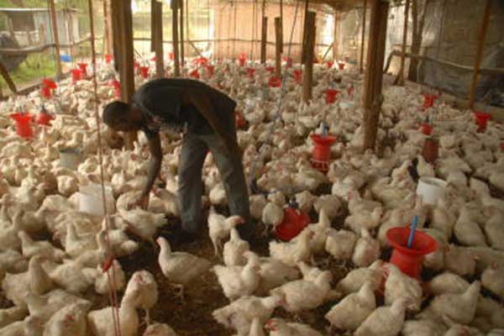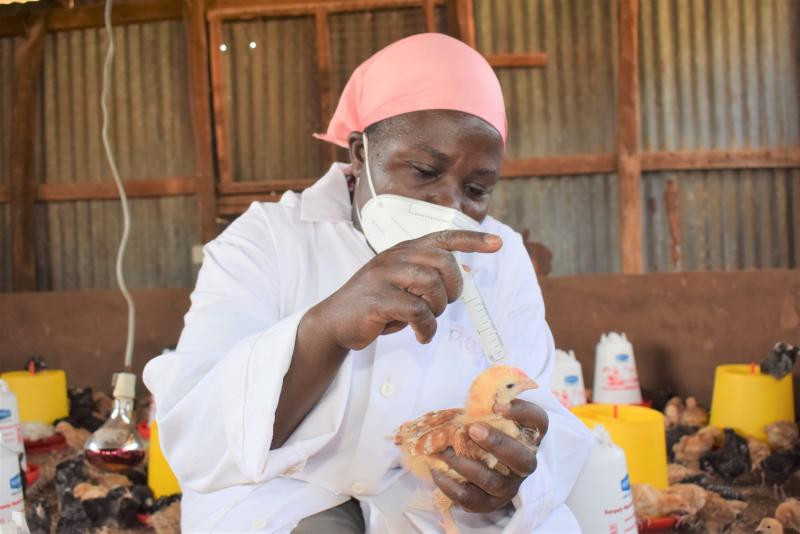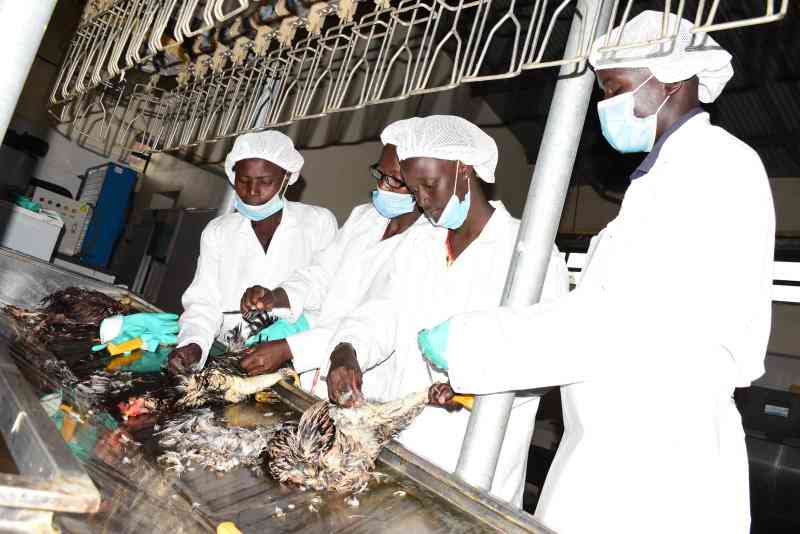Mrs Muthee, a veteran poulty farmer occasionally calls my office to give updates on developments in her farm. This particular morning I was away from my office when she called and left several messages. From the numerous calls she had made, I immediately knew something was amiss.
She had lost 42 birds that fateful morning and more birds were exhibiting clinical signs ranging from listlessness (lethargic) and sitting in a hunched position. The high mortality and morbidity pointed to Gumboro disease. I remembered my university pathology lecturer- Prof Mbuthia tutoring about the lethality of the disease. Gumboro Disease is also known as Infectious Bursal disease. I rarely make a definitive diagnosis over the phone so I decided to make a trip to her farm in Gatundu. By the time I arrived, two hours later, four more birds had succumbed.
Sickly birds
Clearly this was an emergency. Her flock was only four weeks old and some symptoms associated with the disease included soiling of the feathers around the vent area. On post mortem, the cloacal bursa was swollen, yellowish and partly hemorrhagic.The cloacal bursa also known as Bursa of Fabricius is a lymphoid organ found only in birds. The organ is mostly active in young birds and it’s responsible for production of lymphocytes and macrophages (types of white cells responsible for the birds’ immunity.
The bursa is the main disease fighting organ in chicks and once Gumboro disease attacks it the bird remains immuno-compromised and exposed to opportunistic infections. Birds usually die due to opportunistic infections that set in and take advantage of the immune suppressed condition off the chick. Clinical signs may also include whitish diarrhoea and prostration (lying down due to weakness).
Gumboro disease is caused by a virus known as the IBD. The virus is stable in the environment and difficult to eradicate. Its spread occurs through bird-to-bird contact, contact with contaminated people, equipment and fomites such as shoes and clothes The virus is shed through bird dropping and can be spread through air on dust particles. Most susceptible birds are those in the ages of three to eight weeks but infections have been reported in older birds up to 16 weeks.
Chicks under the age of three weeks that get infected do not show clinical signs but may become permanently immunosuppressed. IBD has no specific treatment. Commercially available vaccines are effective in prevention of Gumboro. It should be well noted that antibiotics usually take care of the opportunistic infections that may arise from the immunosuppression status of the bird- but do not treat the disease.
Since spread of the disease is exacerbated by fomites which include clothes and shoes— proper sanitation and biosecurity is paramount to keep the disease at bay. This should include restriction and monitoring human traffic in and out of the farm as well as use of footbath and wheel bath at the farm entrance. Spread of the disease from previous to new flocks is common due to the high resistance and stable nature of the virus.
Breeder farms that carry the parent stock also play a major role in prevention of the disease. Breeder farms usually vaccinate the mother birds with an inactivated form of the IBD vaccine just before start of egg production.Maternal antibodies are therefore passed from the mother hen to the chick. Maternal antibodies protect the chick against early infection for the first 10 to 14 days of the birds’ life. In such a case the chicks need to be vaccinated with the Gumboro vaccine after day 10. If the vaccine is administered before day 10, chances of a reaction between the maternal antibodies and the vaccine particles may occur.
If this happens then the chicks remain exposed and lack the immunity against IBD. It is important to adhere to the vaccination programme provided by the hatchery where chicks are sourced from. Most of the improved indigenous chicken hatcheries advice farmers to vaccinate against Gumboro on day 14 and a booster on day 24.
The writer is a veterinary surgeon and runs Nature Kuku, a farm in Naivasha that produces kuku kienyeji breed and trains small holder farmers.
[email protected]
 The Standard Group Plc is a
multi-media organization with investments in media platforms spanning newspaper
print operations, television, radio broadcasting, digital and online services. The
Standard Group is recognized as a leading multi-media house in Kenya with a key
influence in matters of national and international interest.
The Standard Group Plc is a
multi-media organization with investments in media platforms spanning newspaper
print operations, television, radio broadcasting, digital and online services. The
Standard Group is recognized as a leading multi-media house in Kenya with a key
influence in matters of national and international interest.
 The Standard Group Plc is a
multi-media organization with investments in media platforms spanning newspaper
print operations, television, radio broadcasting, digital and online services. The
Standard Group is recognized as a leading multi-media house in Kenya with a key
influence in matters of national and international interest.
The Standard Group Plc is a
multi-media organization with investments in media platforms spanning newspaper
print operations, television, radio broadcasting, digital and online services. The
Standard Group is recognized as a leading multi-media house in Kenya with a key
influence in matters of national and international interest.









